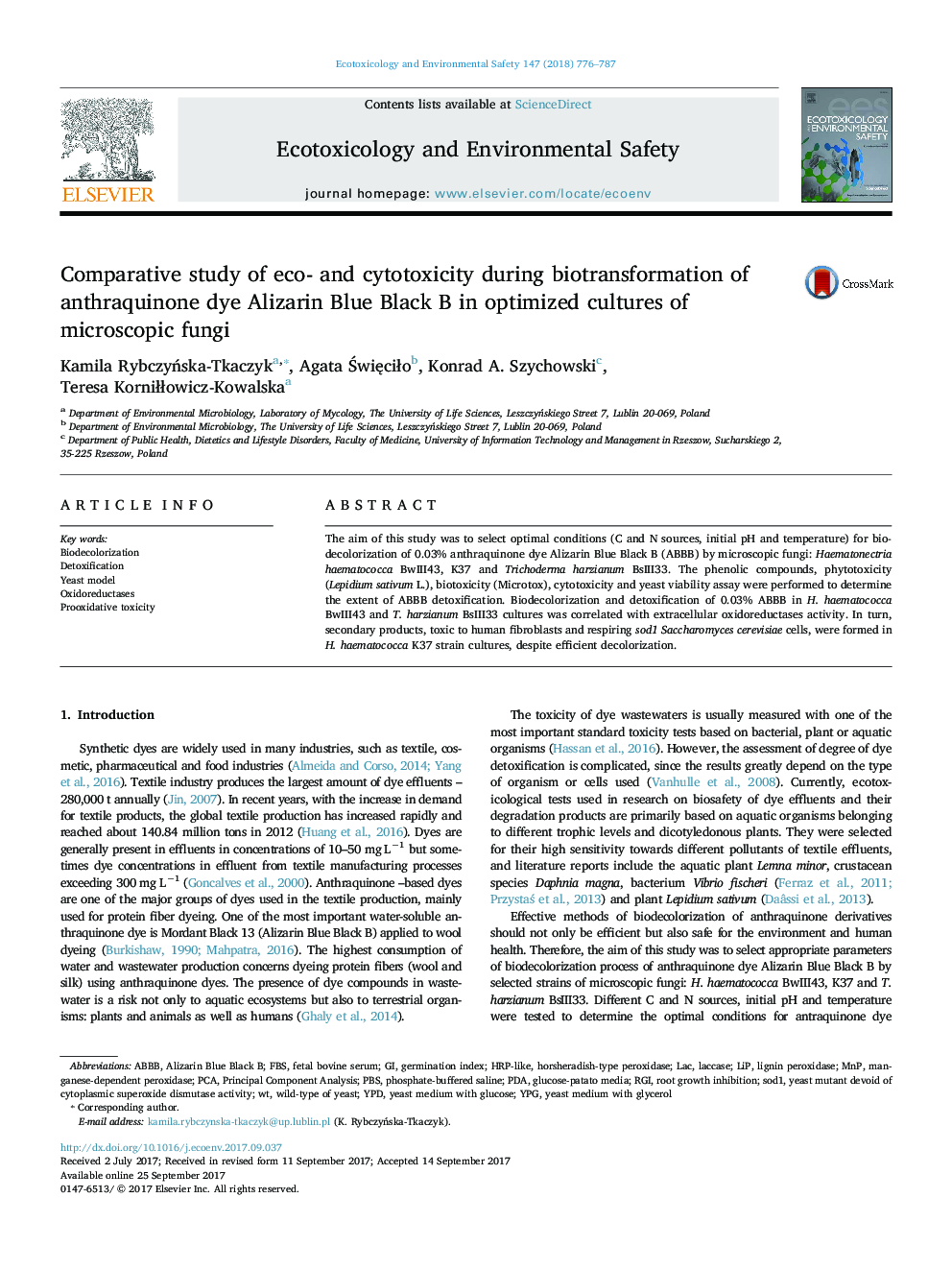| کد مقاله | کد نشریه | سال انتشار | مقاله انگلیسی | نسخه تمام متن |
|---|---|---|---|---|
| 5747832 | 1618917 | 2018 | 12 صفحه PDF | دانلود رایگان |

- Different sources of C, N, medium pH and temperature were tested for biodecolorization of Alizarin Blue Black B (ABBB).
- Biodecolorization and detoxification of 0.03% ABBB is related to activity of peroxidases.
- Products of anthraquinone dye treatment by T. harzianum BsIII33 are less toxic.
- Secondary products, toxic to human cells and respiring sod1 yeast, were formed in H. haematococca K37 strain cultures.
The aim of this study was to select optimal conditions (C and N sources, initial pH and temperature) for biodecolorization of 0.03% anthraquinone dye Alizarin Blue Black B (ABBB) by microscopic fungi: Haematonectria haematococca BwIII43, K37 and Trichoderma harzianum BsIII33. The phenolic compounds, phytotoxicity (Lepidium sativum L.), biotoxicity (Microtox), cytotoxicity and yeast viability assay were performed to determine the extent of ABBB detoxification. Biodecolorization and detoxification of 0.03% ABBB in H. haematococca BwIII43 and T. harzianum BsIII33 cultures was correlated with extracellular oxidoreductases activity. In turn, secondary products, toxic to human fibroblasts and respiring sod1 Saccharomyces cerevisiae cells, were formed in H. haematococca K37 strain cultures, despite efficient decolorization.
251
Journal: Ecotoxicology and Environmental Safety - Volume 147, January 2018, Pages 776-787